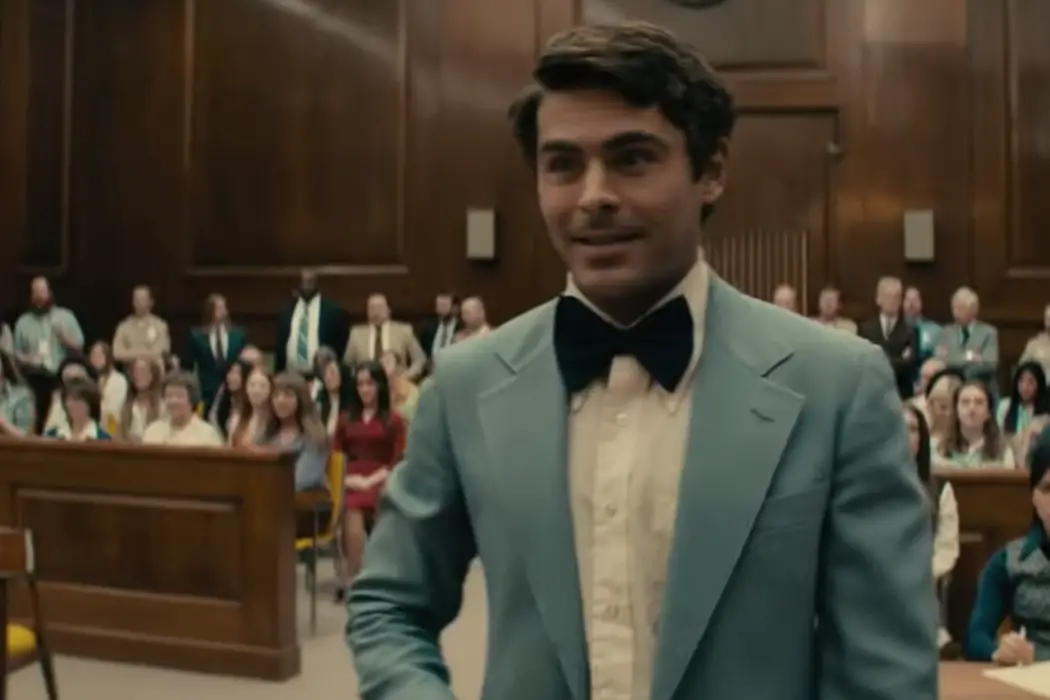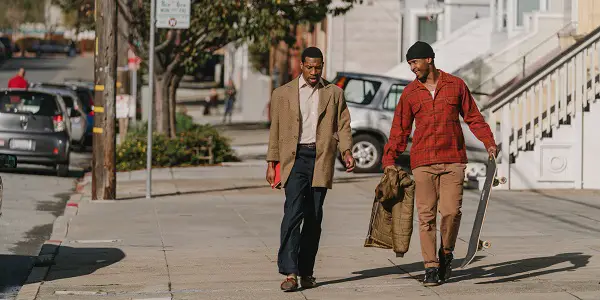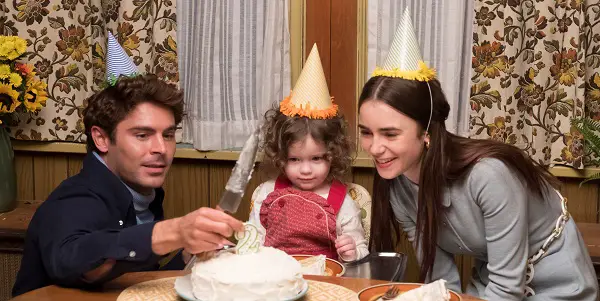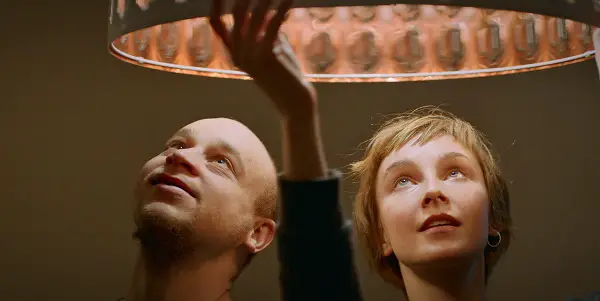Sundance Film Festival 2019 Report 3: THE LAST BLACK MAN IN SAN FRANCISCO, EXTREMELY WICKED, SHOCKINGLY EVIL AND VILE, & THE MAGIC LIFE OF V

Seattle area film critic and aspiring screenwriter. My reviews can…
My second report from Sundance 2019 includes my current favorite from the festival, a snoozer about Ted Bundy, and a documentary about the virtues of LARPing.
The Last Black Man in San Francisco (Joe Talbot)

Oakland served as the backdrop for arguably the two best films to roar out of Sundance in 2018, the brilliant satires Blindspotting and Sorry to Bother You. This Sundance, Oakland’s foil across the Bay takes its turn in the gentrification spotlight. Director Joe Talbot (a fifth generation San Franciscan) and his screenwriter/leading man Jimmie Fails clearly have a love-hate relationship with San Francisco. The Last Black Man in San Francisco is a beautiful, impassioned rumination on the importance of place, even if it only exists in the mind.
“You never really own shit,” one character advises early in Joe Talbot’s love letter to his flawed home town. Still, Jimmie Fails (Fails) knows what is his; a classic Victorian home built in the shadow of the Golden Gate Bridge by his grandfather back in 1946. Well, you can’t actually see the Golden Gate Bridge, but the architecture, including an ornate ‘witches hat’ are spot on for the area dubbed “The Harlem of the West.”
Jimmie’s father (Rob Morgan) lost the house long ago in one of his many financial calamities, but Jimmie and his best friend Mont (Jonathan Majors) still make pilgrimages to the venerable house to tend the garden and touch up the chipped paint. This is a source of consternation for the current owners, who encourage Jimmie to abandon his housekeeping efforts by throwing fruits and vegetables at him.
The emotional heart churning within The Last Black Man in San Francisco is the unique friendship between Jimmie and Mont. It’s no exaggeration to say that we’ve never seen this level of unapologetic caring and tenderness between two straight Black men in the history of cinema. Both men are strong, independent, and driven by their passions; Jimmie to reclaim his childhood home and Mont to produce his long gestating stage play. More importantly, they both share a sentimental longing for what San Francisco used to be, and what it could be again.
Against the strains of Emile Mosseri’s evocative score, effortlessly alternating between mournful and celebratory, Talbot captures the spirit of San Francisco, from slum to suite. Naked men sit at bus stops, snooty Millennials lament having to “live in an old crack house,” and a Greek chorus of Jimmie’s childhood friends provides a boisterous commentary on neighborhood events. It’s a hearty stew of the good, the bad, and the ugly from a city that seems eager to uproot its past.
After circumstances allow Jimmie to (temporarily) re-claim his treasured home, he re-populates its halls with antiques from the past. For a kid with no mother and an embarrassment of a father, these cherished symbols of the past are all Jimmie has to cling to. It’s a narrow self-identity that threatens to trap him forever unless he finds something new to inspire his hopes and dreams.
“People are more than just one thing,” Jimmie observes, perhaps trying to convince himself there’s life after his dream house. The Last Black Man in San Francisco isn’t just some little film about a guy trying to get his house back. This is a delicate exploration of place, connection, and the relationships that bind us to a community.
Extremely Wicked, Shockingly Evil and Vile (Joe Berlinger)

Perhaps the strongest indictment of Extremely Wicked, Shockingly Evil and Vile is that it turns America’s most notorious serial killer into a complete bore. Even the most disengaged narcissistic teenager knows who Ted Bundy was. The monstrous serial killer preyed on women across the United States during a rampage that spanned over a decade. But he didn’t kill all of his female victims; some he allowed to dangle in a persistent lust over his boyish charms and handsome good looks.
Director Joe Berlinger makes a rare detour into feature films with this new Bundy docudrama. Better known for impactful documentaries like the Paradise Lost trilogy, Berlinger also has a Bundy documentary currently streaming on Netflix, Conversations with a Killer: The Ted Bundy Tapes. If given a choice, fire up the Netflix and skip Extremely Wicked, Shockingly Evil and Vile.
To his credit, Berlinger takes a different approach to the standard serial killer docudrama. Rather than dramatizing Bundy’s savage crimes, he takes the perspective of Bundy’s longtime girlfriend Liz Kendall (Lily Collins). Bundy fills his Seattle lover’s head with visions of a “place on the Sound with a dog and a car.” Meanwhile, he’s masterminding a killing spree through Washington, Utah, Colorado, and Florida.
Had Berlinger and his screenwriter, Michael Werwie, stuck to Liz’s conflicted perspective – she stays supportive of Bundy despite her growing suspicions – there might have been some interesting insights into the collateral damage of evil. Instead, Liz’s character remains hopelessly thin. She’s mainly relegated to crying on her couch and watching news clips of Bundy’s exploits while she drinks herself into oblivion. Not exactly new or compelling stuff.
Perhaps sensing the sucking dramatic void at the heart of his film, Berlinger focuses, instead, on Bundy’s legal tribulations. A law school dropout, Bundy knew just enough jurisprudence to make a mockery of the Florida courtroom where he was eventually tried and convicted. Bundy’s legal shenanigans and audacious prison escapes might prove mildly entertaining to anyone unfamiliar with history (which records that Bundy was executed on January 24, 1989), but they reveal nothing about the evil that made this monster tick.
In fact, Extremely Wicked, Shockingly Evil and Vile adds nothing new to the Bundy dossier. There are no overarching themes, no fascinating subtext, no discernible character arcs, or any of the other things that make for absorbing drama. Any underlying creepiness we might feel about Ted Bundy being the hero in a romantic relationship is diffused by the paucity of scenes between Bundy and Liz. It’s a fundamental structural mistake in Werwie’s script that ruins any chance for escalating dramatic tension.
Efron is fine as Bundy’s physical doppelganger, though it’s safe to assume Bundy wasn’t sporting six-pack abs beneath his preppie sweater. Basically, Efron is left to exude Bundy’s characteristic smarm and little else. Because Efron is never allowed to conjure the monster, Bundy’s facsimile of normalcy just feels flat rather than creepy. Without Mr. Hyde, after all, Dr. Jekyll would be one boring son of a bitch.
The only glimmer of hope in Extremely Wicked, Shockingly Evil and Vile is the arrival of its most intriguing character, Carole Ann Boone (Kaya Scodelario). Boone would eventually marry Bundy in prison and have his child (ew!). The creepiness of Scodelario’s icy demeanor and wild eyes dwarfs anything that Efron is able to produce. Sadly, she arrives too late to save this baffling miscalculation by an otherwise talented filmmaker.
The Magic Life of V (Tonislav Hristov)

The resiliency of human beings never fails to astonish. After facing persistent abuse as a child at the hands of her alcoholic father, a Finnish girl named Veera Lapinkoski turns to Live Action Role Playing, or LARPing, to channel her inner strength in The Magic Life of V. From the re-enacting of Harry Potter magic rituals in Poland to fighting post-apocalyptic mutants in Bulgaria, Veera adopts the alter ego of V to extinguish all demons, both physical and emotional.
It took director Tonislav Hristov over six years to finish his documentary and the craft shows. Photographed and edited more like a splashy fiction feature than a staid documentary, Hristov intersperses Veera’s candid therapy sessions with her LARPing excursions around Europe. There is the metaphorical slaying of Veera’s demons, obviously, but there is also an undeniable sense of tension as Veera and her fellow LARPers creep around derelict buildings at night. To face your enemies in the dark, be they demons or repressed horrors, takes courage, and Hristov makes the experience suitably unsettling.
Unfortunately, pacing is also a problem for Hristov. When Veera isn’t in therapy or LARPing, The Magic Live of V is plagued by extended intervals of non-essential activities, including lots of Veera walking and eating. No doubt she has much on her mind, but watching her stare out a window doesn’t exactly make for compelling viewing.
That’s a shame because Veera is an intriguing young woman whose story of abuse is re-played daily in millions of families around the world. Veera’s grainy home movie footage depicts a sneering father too drunk to even stand up. Her older brother Ville, who suffers from a developmental disorder, is a constant source of attention from their bullying father. As an adult, a confused Ville is forced to become an alcoholic himself just to be a drinking buddy to their now estranged father.
Veera’s only option is to escape into a world of fantasy and become V; a character strong enough to win the battles that she can’t bear to fight. When Veera finally speaks to her father for the first time in 15 years, it’s her persona as V that gives her the strength to confront him about the abuse. Hopefully, role playing can become a new form of therapy to which young, more multimedia savvy victims of abuse might kindle.
Be sure to catch my first report from Sundance 2019!
Does content like this matter to you?
Become a Member and support film journalism. Unlock access to all of Film Inquiry`s great articles. Join a community of like-minded readers who are passionate about cinema - get access to our private members Network, give back to independent filmmakers, and more.
Seattle area film critic and aspiring screenwriter. My reviews can be found in The Seattle Times, PopMatters, Nonfics, Goomba Stomp, and Sound on Sight, just to name a few. Post-rock is kind of my obsession, so I'm probably listening to it right now...













